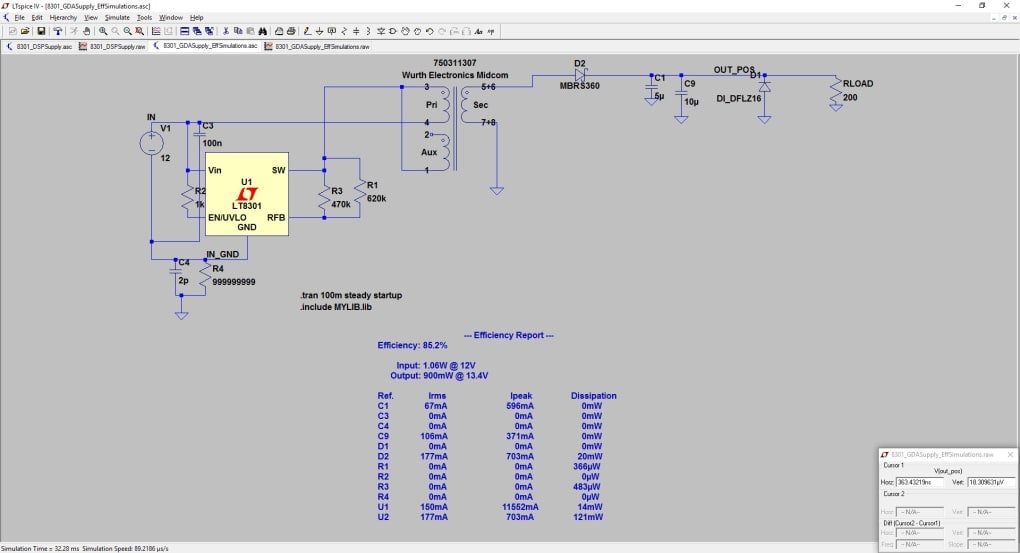

- #LTSPICE FOR MAC FOR FREE#
- #LTSPICE FOR MAC HOW TO#
- #LTSPICE FOR MAC MAC OS#
- #LTSPICE FOR MAC SOFTWARE#
- #LTSPICE FOR MAC PC#
The subcircuit syntax for an op-amp supplied by a manufacturer looks like this.
#LTSPICE FOR MAC SOFTWARE#
SUBCKT defines a reusable SPICE netlist - similar to a function with it's name and associated parameters in software languages. Open the LMV321 opamp model previously saved as LMV321.MOD in your working directory using your favorite text editor.

For the Maxim model you would right-click on the LMX321.FAM file at their website and save it to your LTspice working directory.Īt the end of this step you should have these three spice model files in your working directory:Įach of these files can be opened with a text editor to see a common stucture: In the future you may have to search for the model names if they have been moved by the chip vendors to new web pages.įor TI and STMicro you would copy the model from the downloaded zip files into your working directory. See the three associated diagrams for specific files to download as of the writing of this instructable.
#LTSPICE FOR MAC HOW TO#
By the end of this tutorial you will know how to interpret the.

The target audience are those with some experience placing components on a schematic and running a simulation. To highlight these performance issues I reuse these three models in a Current-to-Voltage design as well. Each of these models present different performance features as well. Each of these models highlight different methods available within LTspice for use with the wide variety of component models supplied from various vendor websites. This Instructable will demonstrate how to go beyond the component library supplied with LTspice by incorporating an LMV321 op-amp model from three different chip vendors to create a simple amplifier schematic as shown in the drawing. The learning curve is easy to conquer thanks to support by Analog Devices, Yahoo's LTspice Support Group and its compatibility with most common SPICE models supplied by chip vendors. I use it to research circuit behavior and quickly experiment with new circuits for my lab before prototyping a PCB (Printed Circuit Board) design.
#LTSPICE FOR MAC MAC OS#
Follow the instructions below to run the demo circuits in LTspice.LTspice is a free SPICE simulation software tool with schematic capture, waveform viewer, and many enhancements that runs on both Windows and Mac OS X. These demo circuits are designed to ensure proper performance and have been reviewed by Analog Devices’ factory applications group.
#LTSPICE FOR MAC FOR FREE#
Selected Analog Devices devices also have demonstration circuits available for free download.
#LTSPICE FOR MAC PC#
LTspice for Windows PC provides macromodels for most of Analog Devices’ switching regulators, linear regulators, amplifiers, as well as a library of devices for general circuit simulation. LT spice is a powerful, fast and free simulation software, schematic capture and waveform viewer with enhancements and models for improving the simulation of analog circuits. This enhancements to SPICE have made simulating switching regulators extremely fast compared to normal SPICE simulators, allowing the user to view waveforms for most switching regulators in just a few minutes. Included in the download of LTspice are macromodels for a majority of Analog Devices switching regulators, amplifiers, as well as a library of devices for general circuit simulation. LTspice is a high performance SPICE simulation program app, schematic capture and waveform viewer with enhancements and models for easing the simulation of analog circuits.


 0 kommentar(er)
0 kommentar(er)
